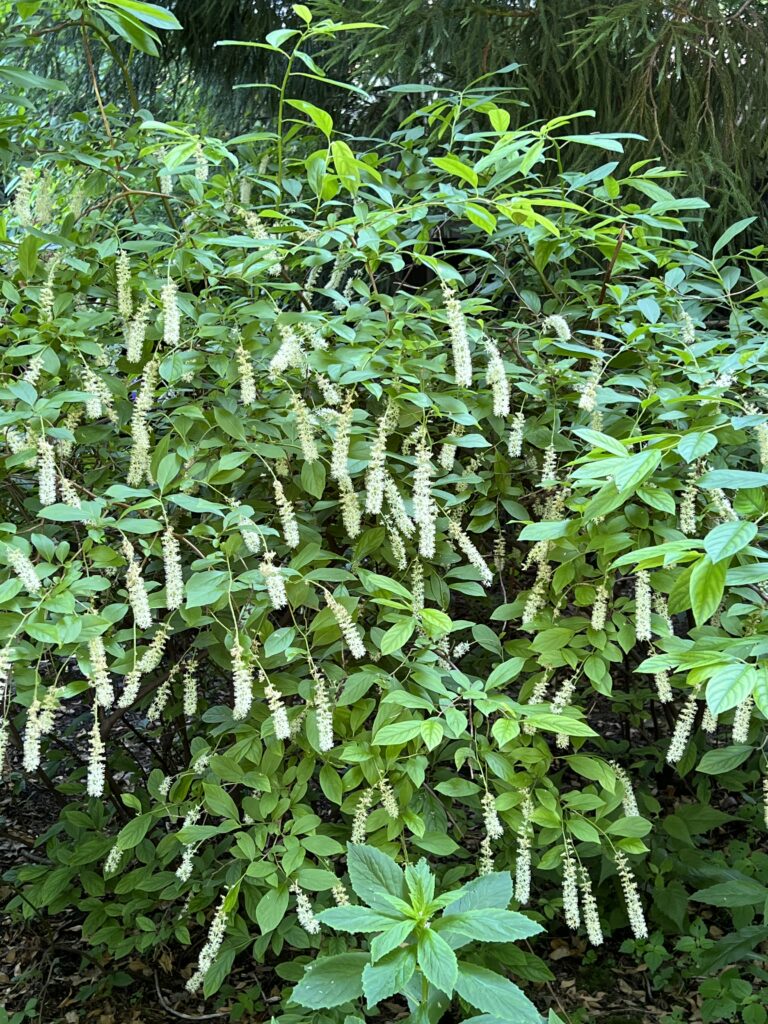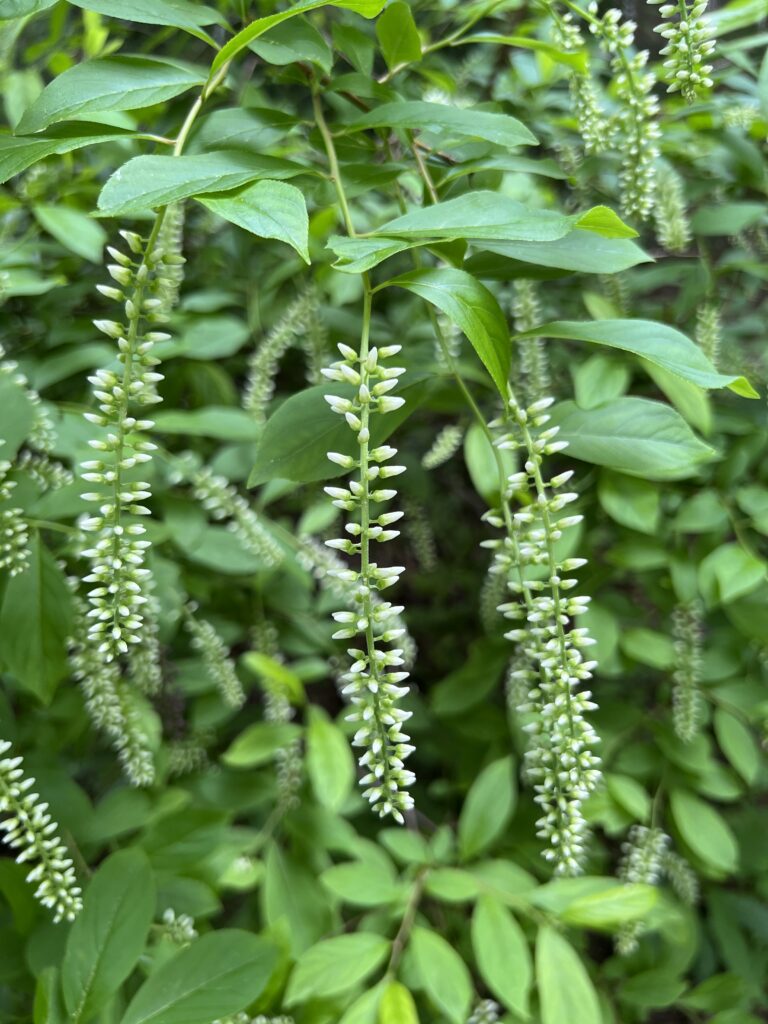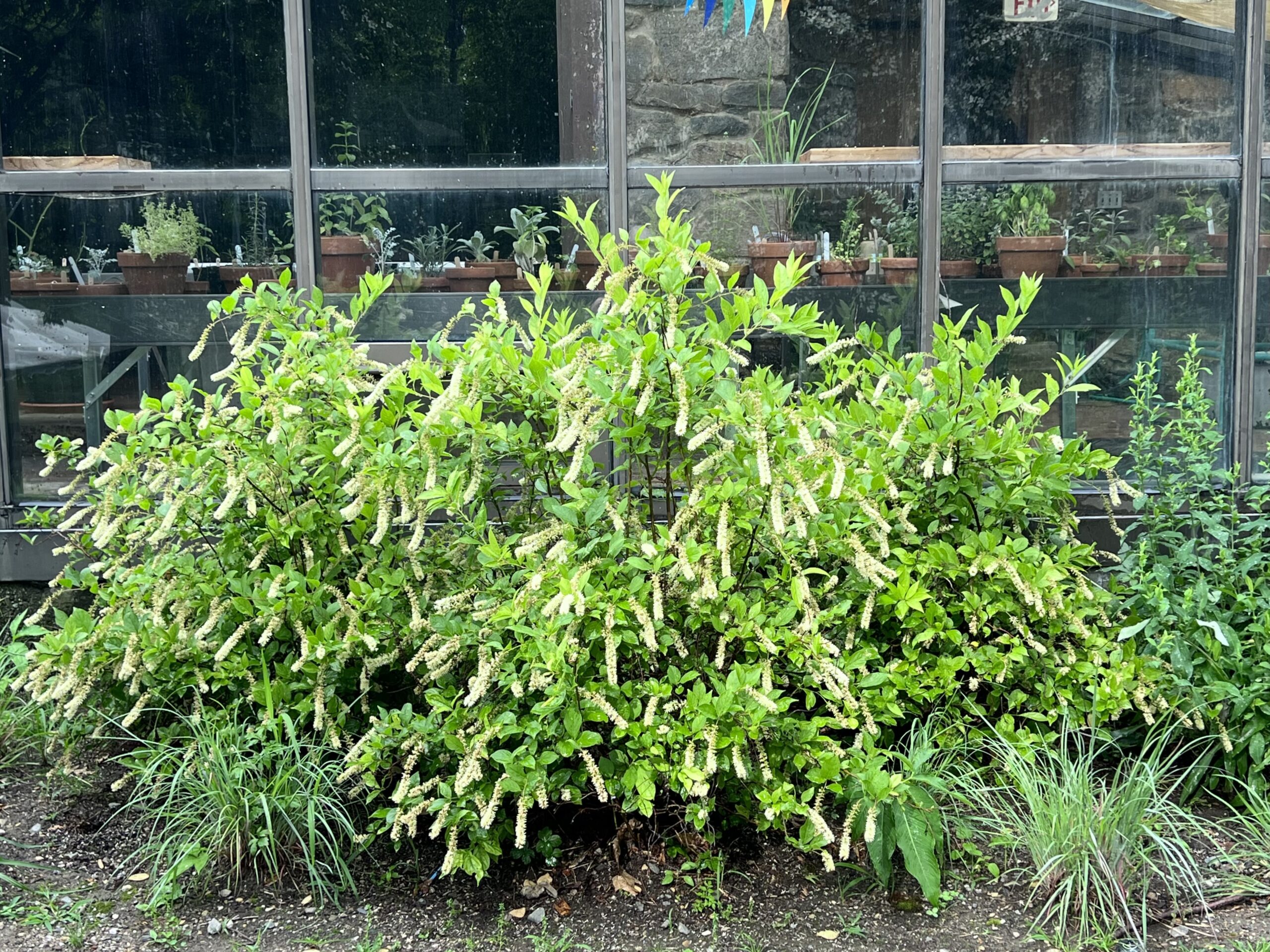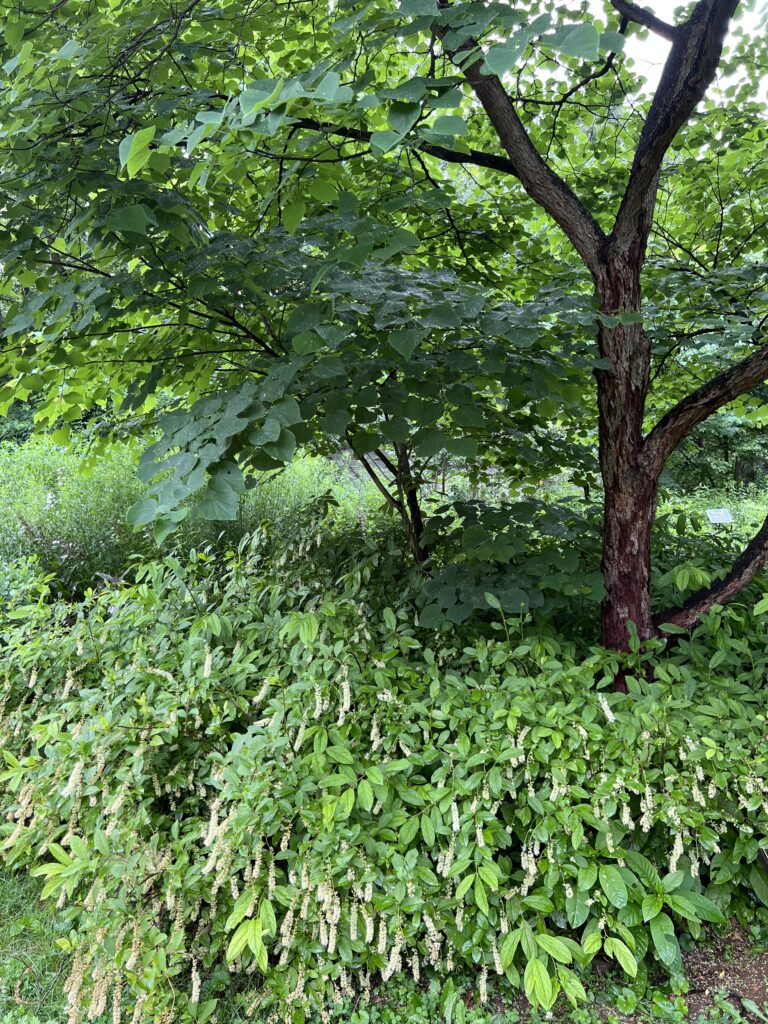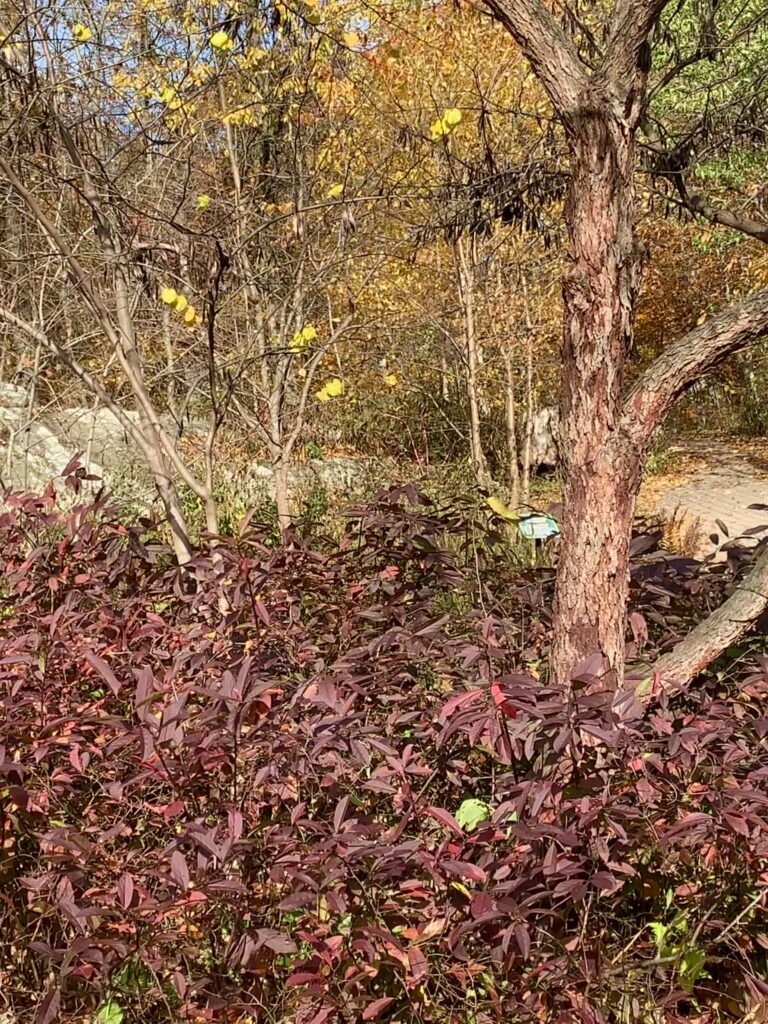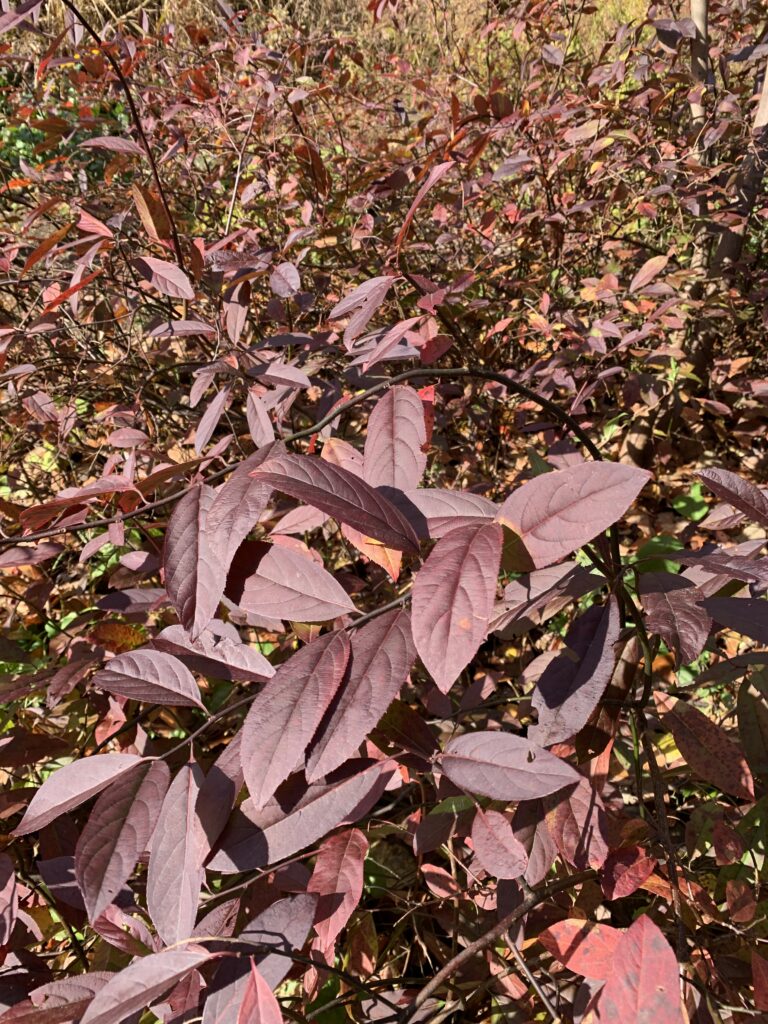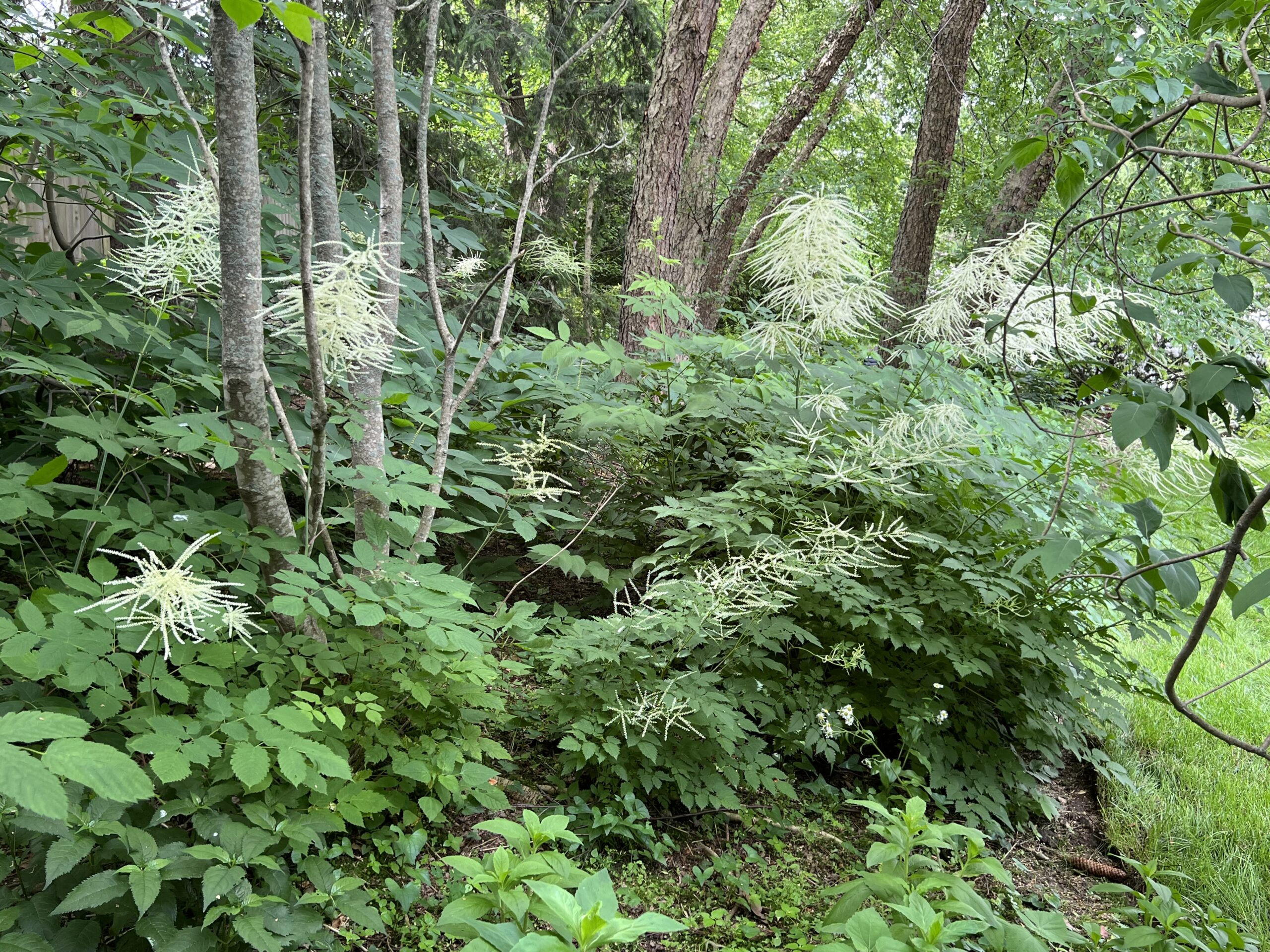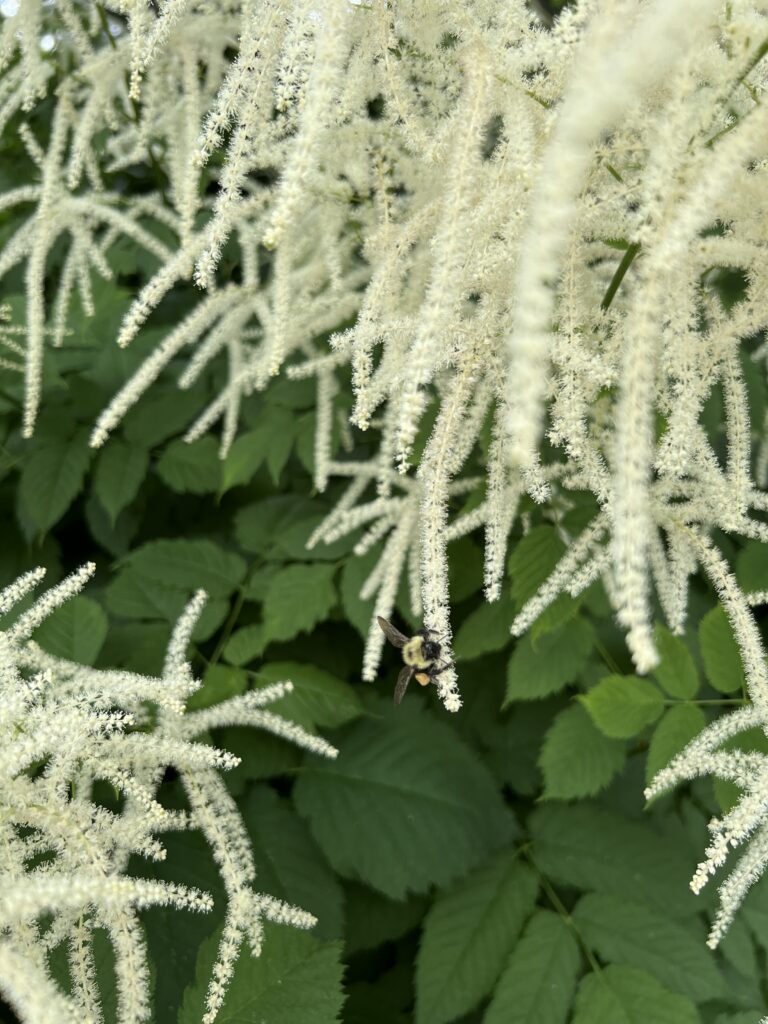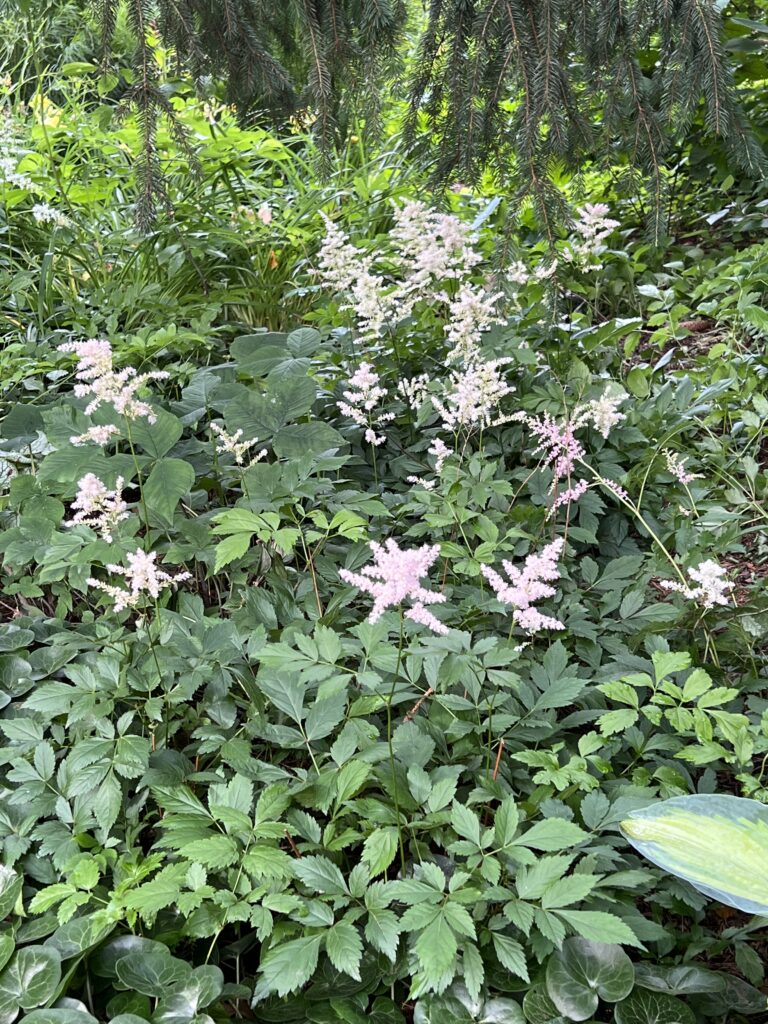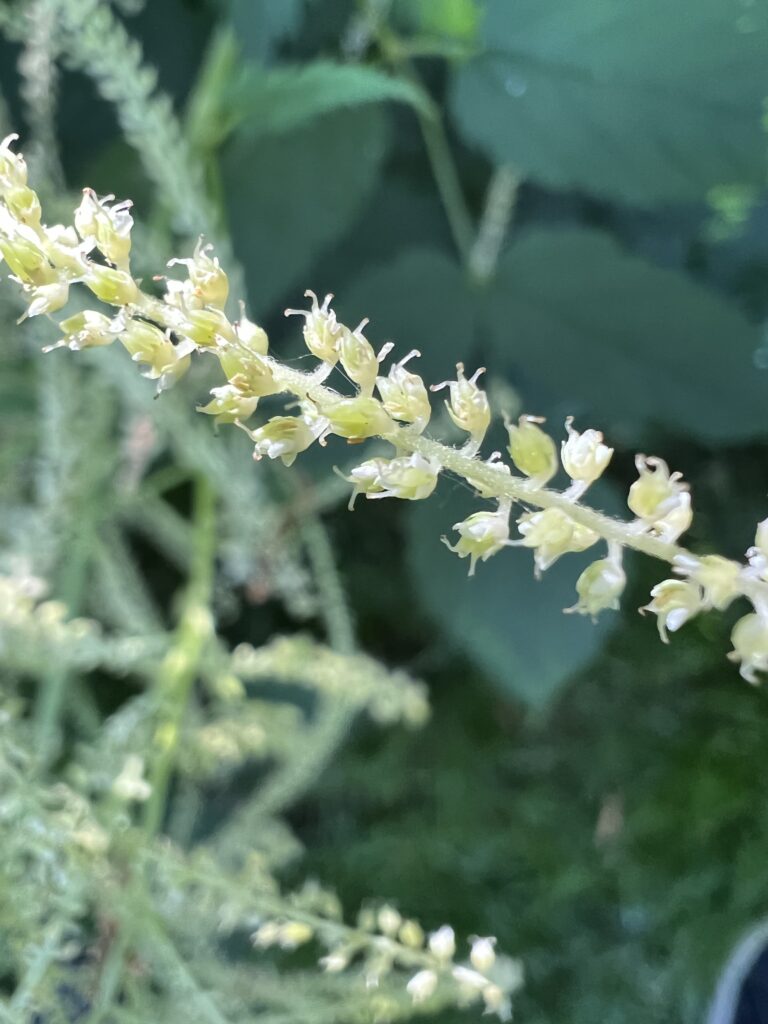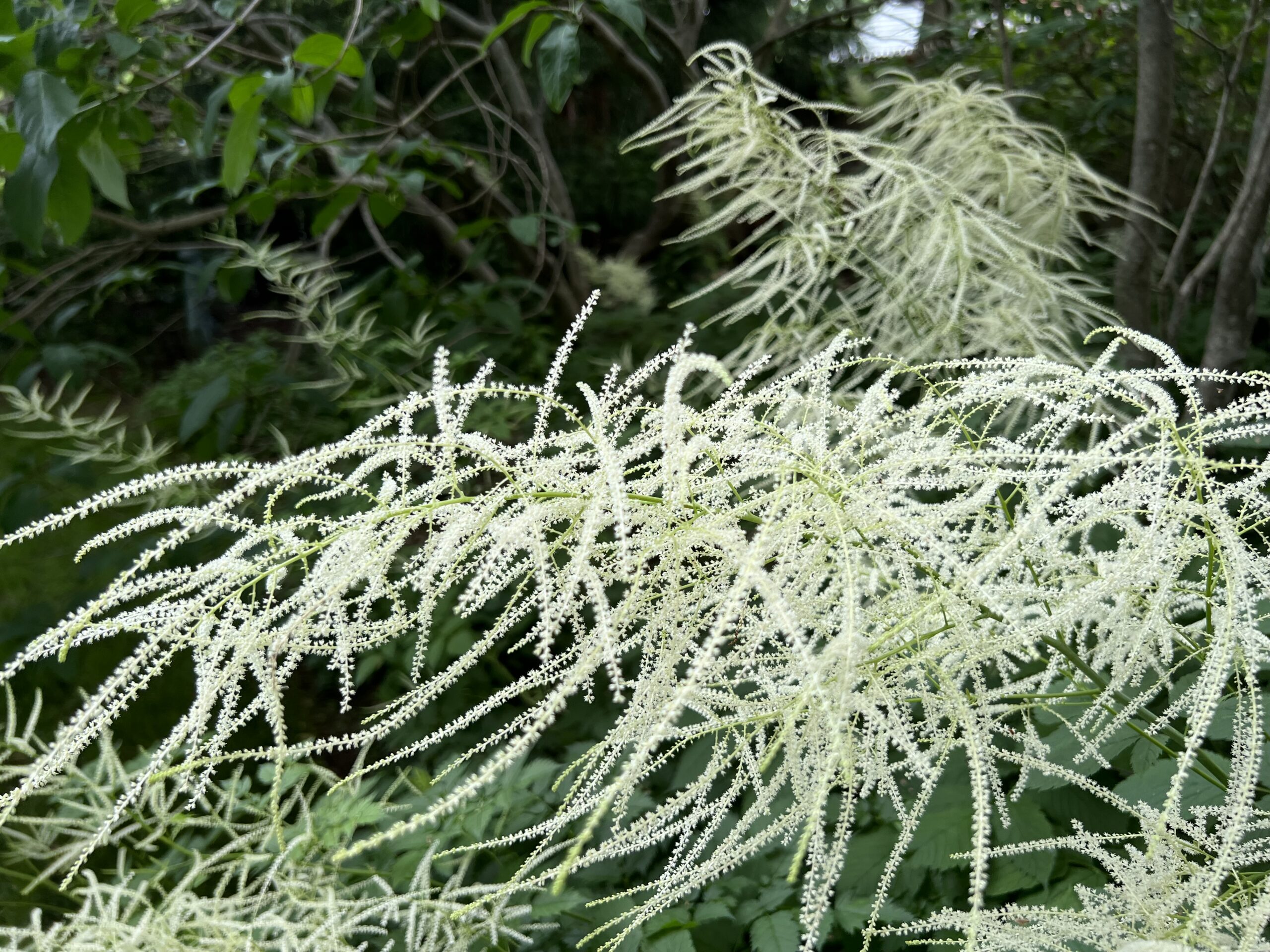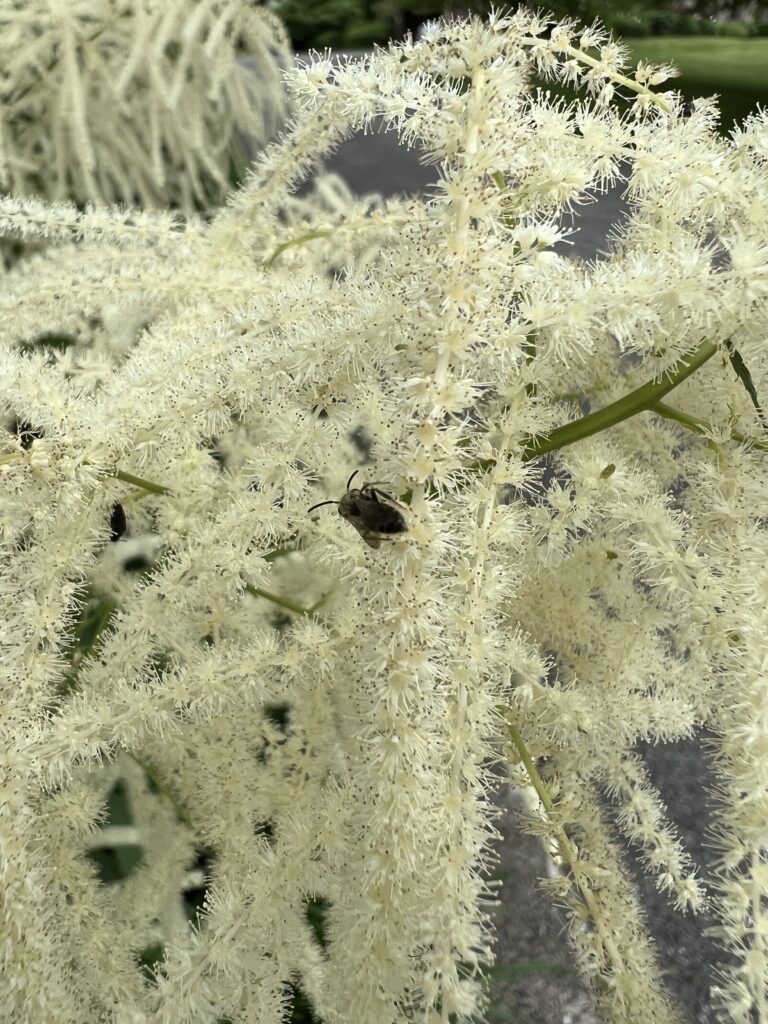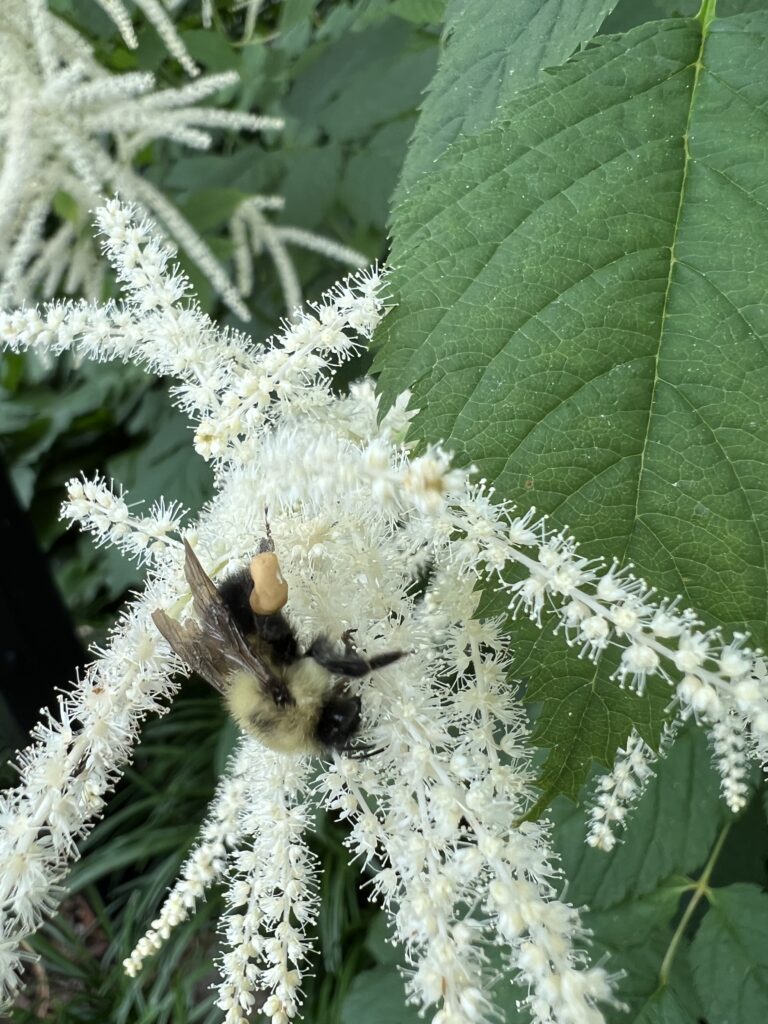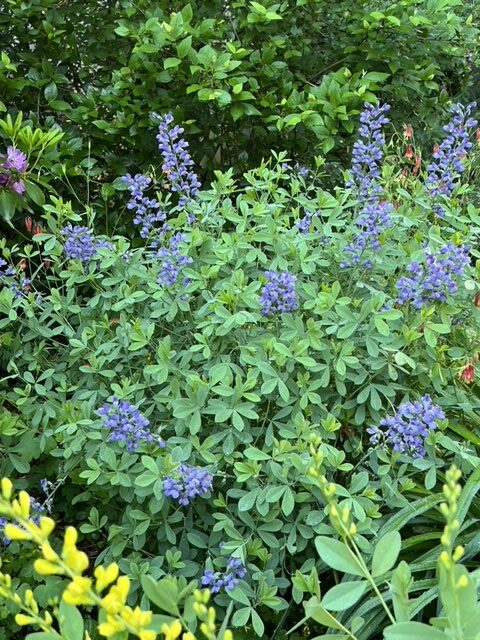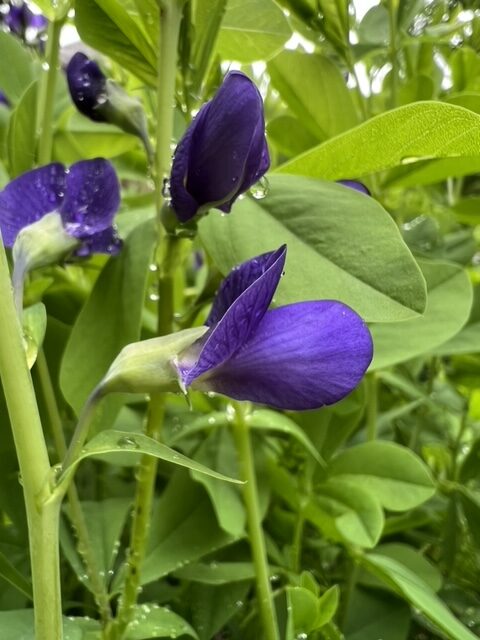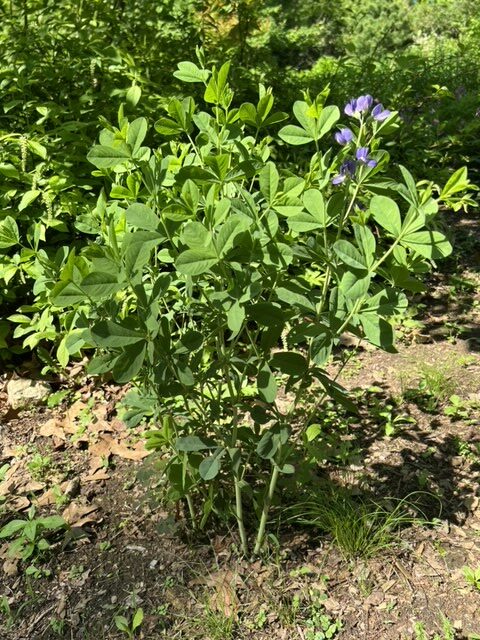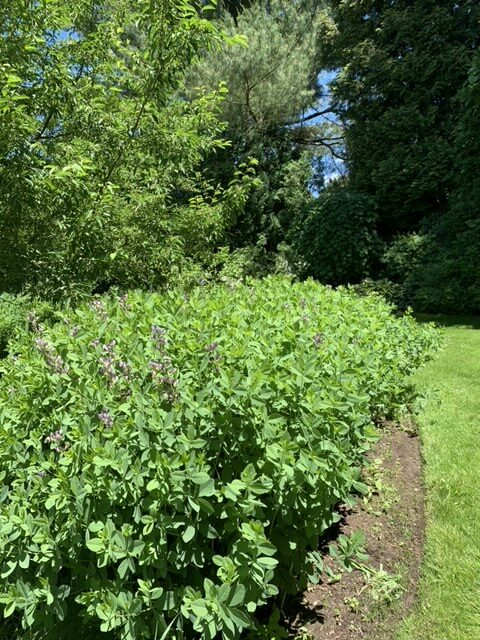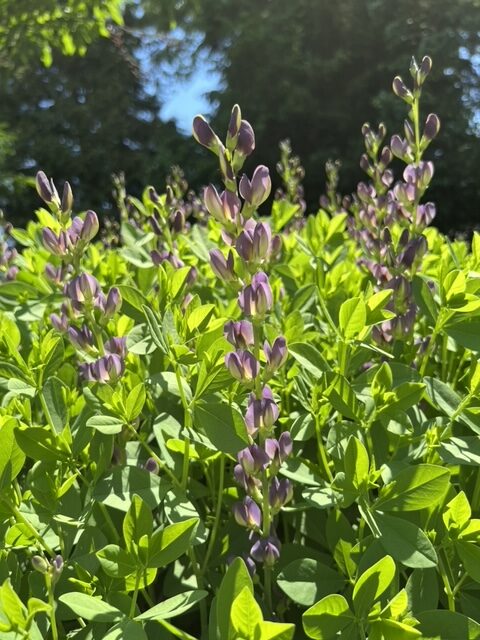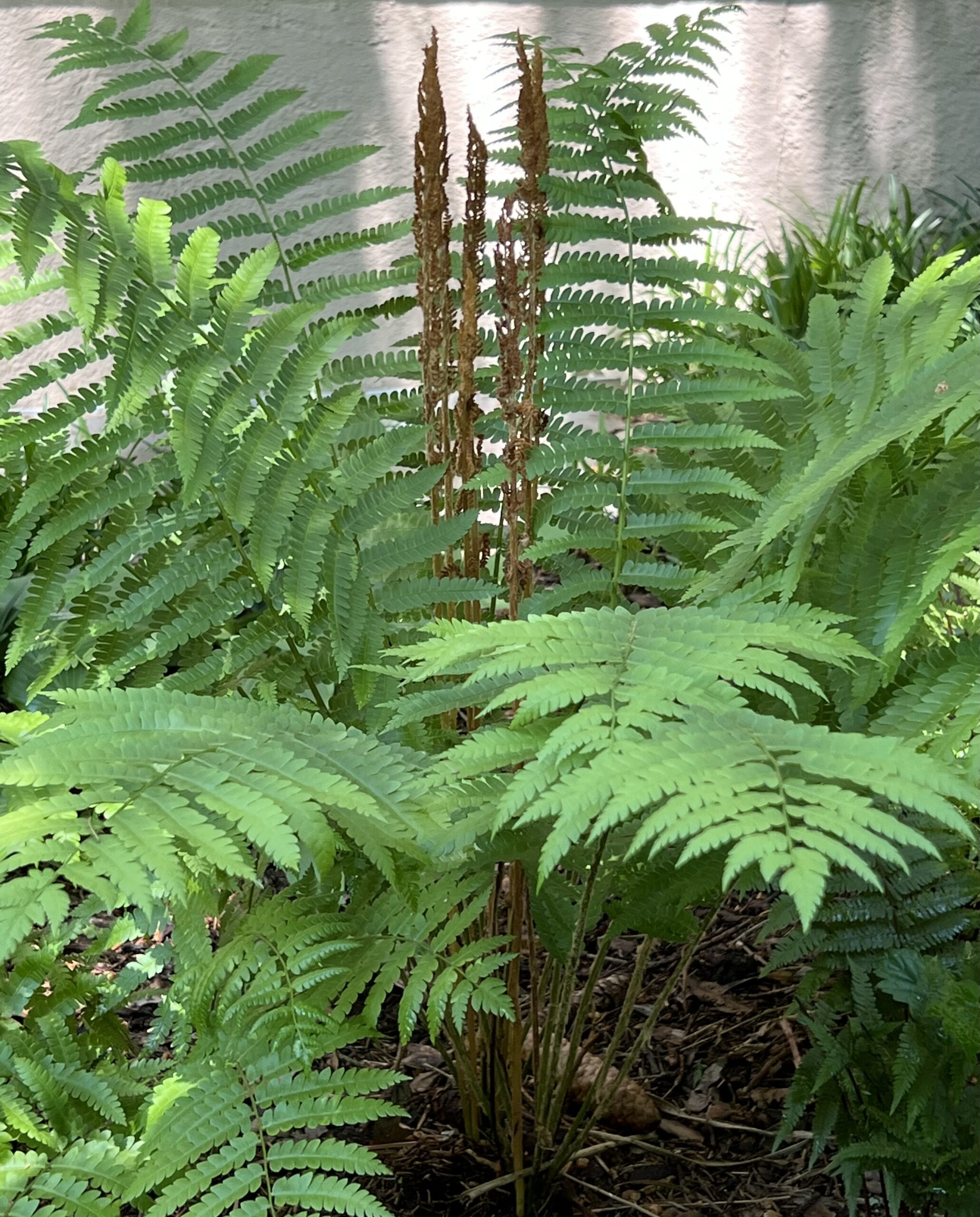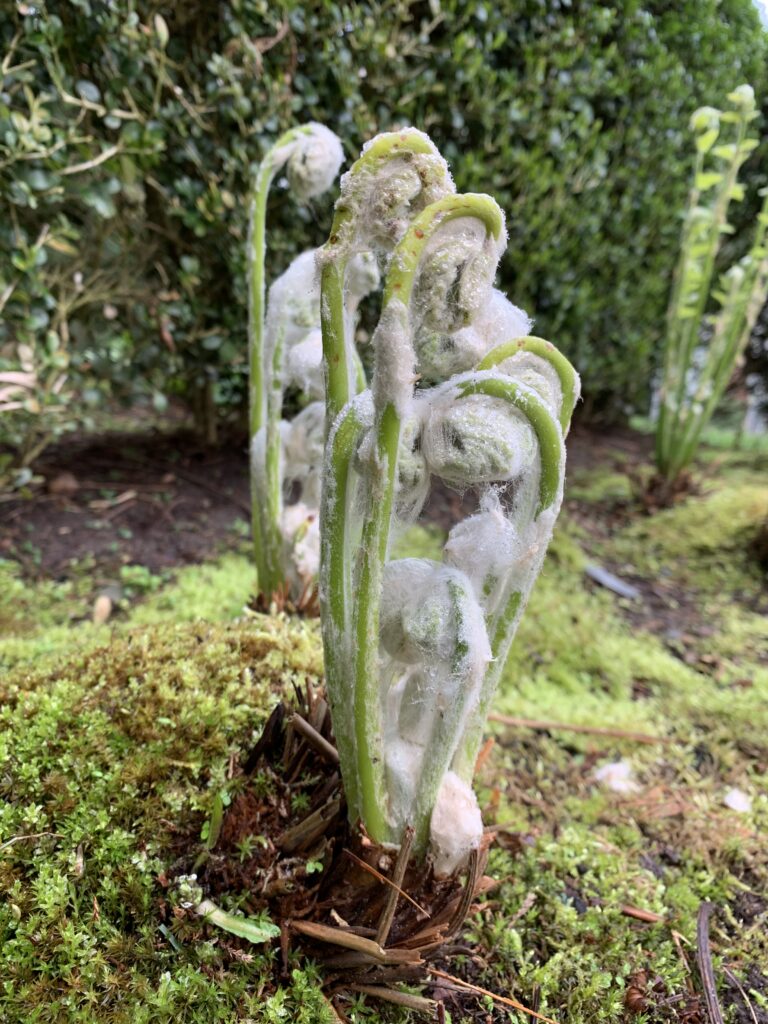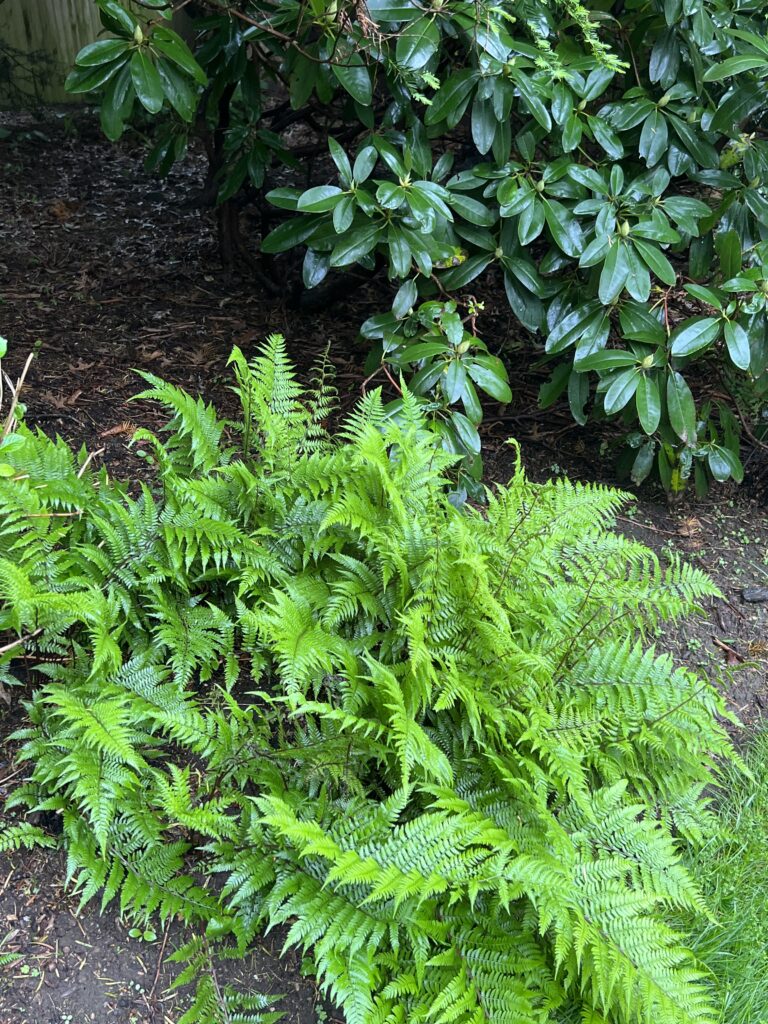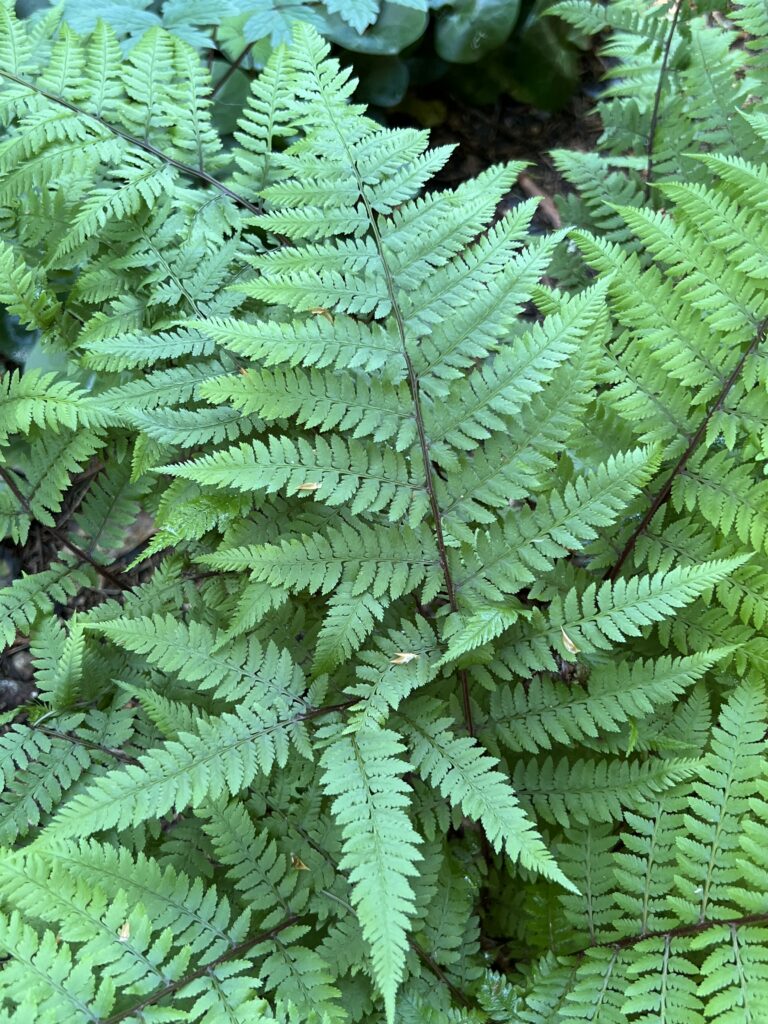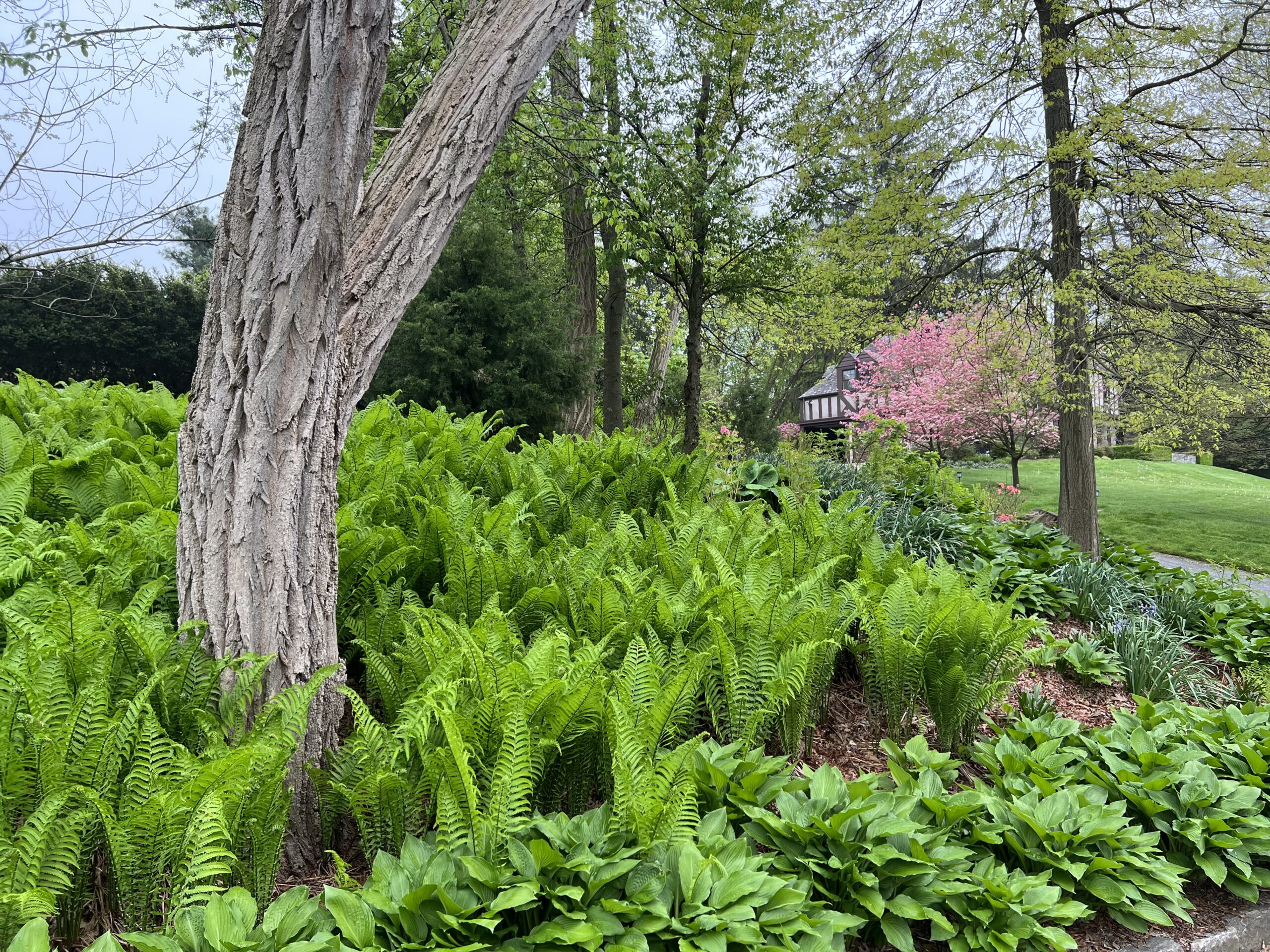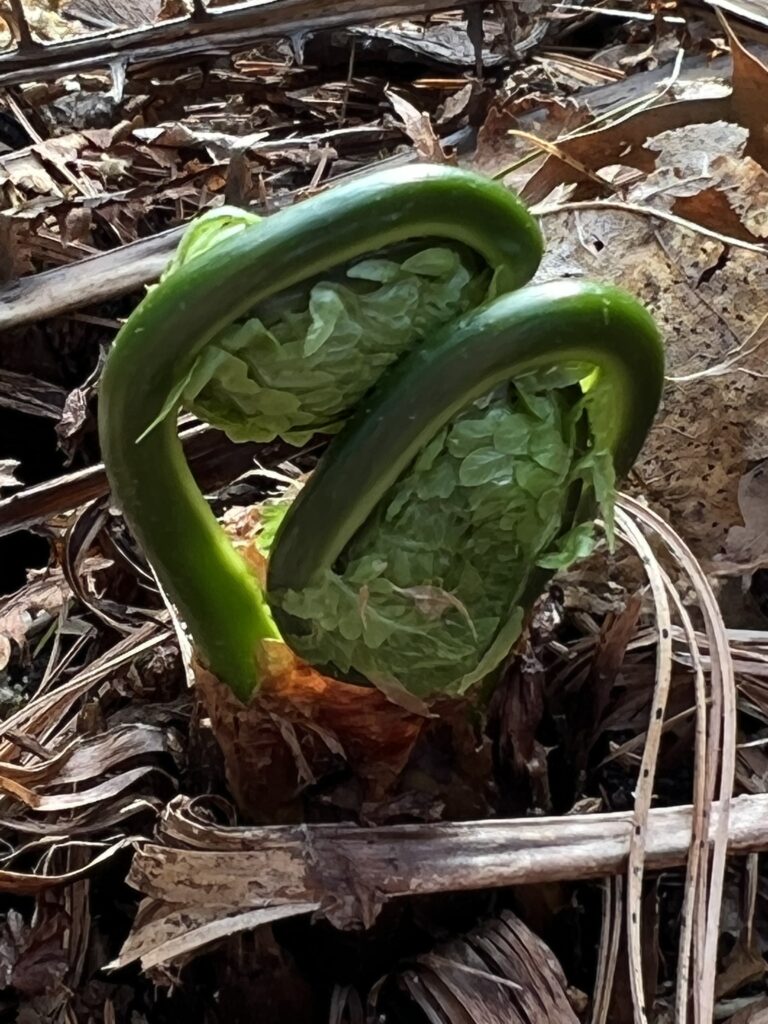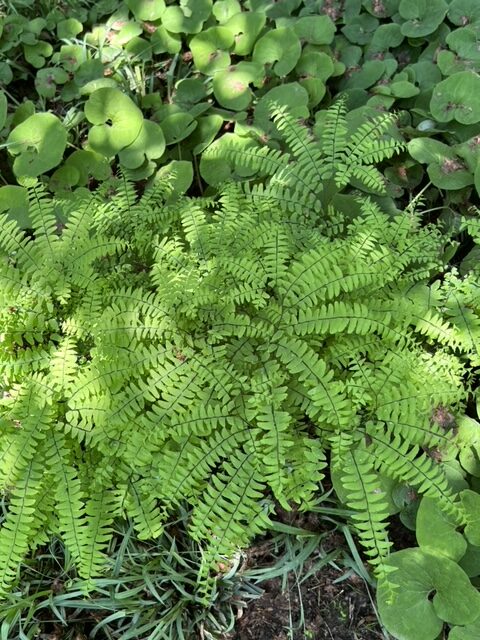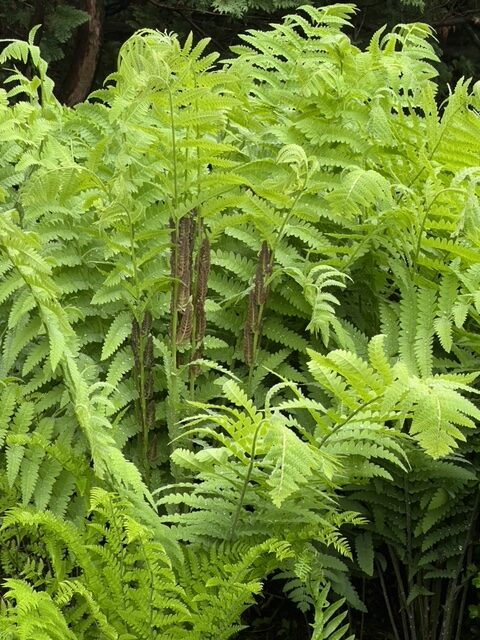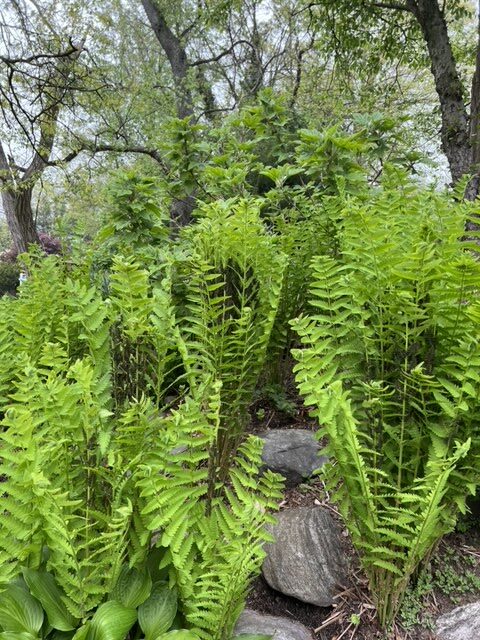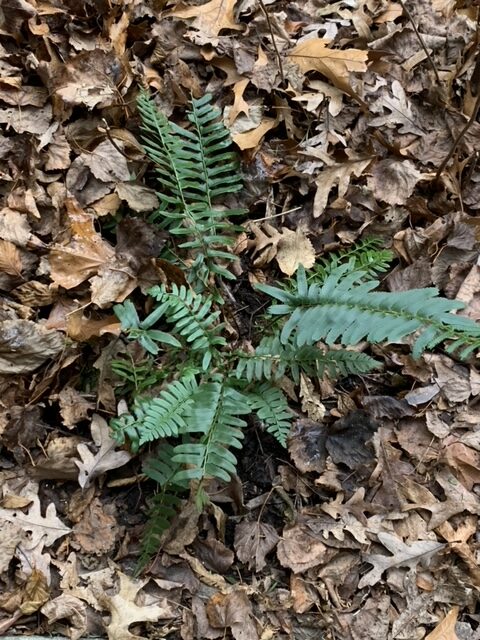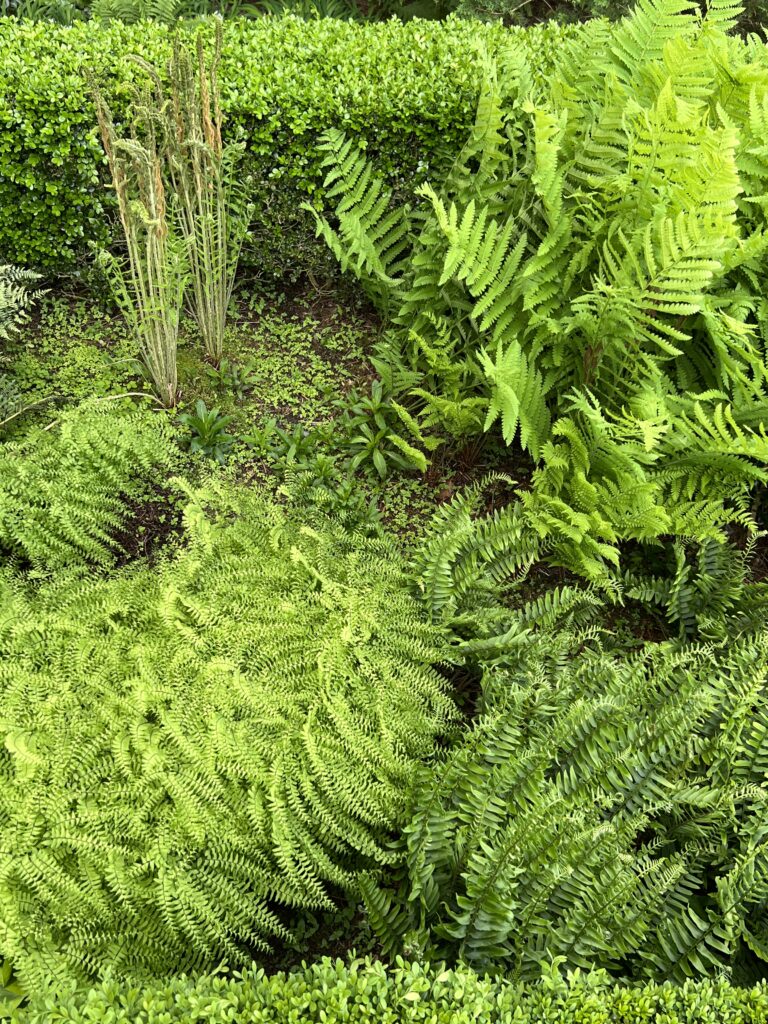Have you ever heard a plant hum?
On a sunny summer day, you can actually hear Shrubby St. John’s Wort humming. It’s not the plant itself, of course, but the sound of extremely happy bumblebees buzzing as they collect pollen from countless bright yellow pom-pom flowers.
“St. John’s wort” is the common name for a family of almost 500 plant species worldwide. The name refers to its time of bloom – around St. John’s Day on the Christian calendar, or June 24. “Wort” is the old English word for “plant,” especially plants known for their medicinal value. Perhaps you’ve heard St. John’s wort recommended as an herbal remedy for mild depression? That particular St. John’s wort is Hypericum perforatum, a weedy perennial native to Europe and now considered invasive in parts of North America.
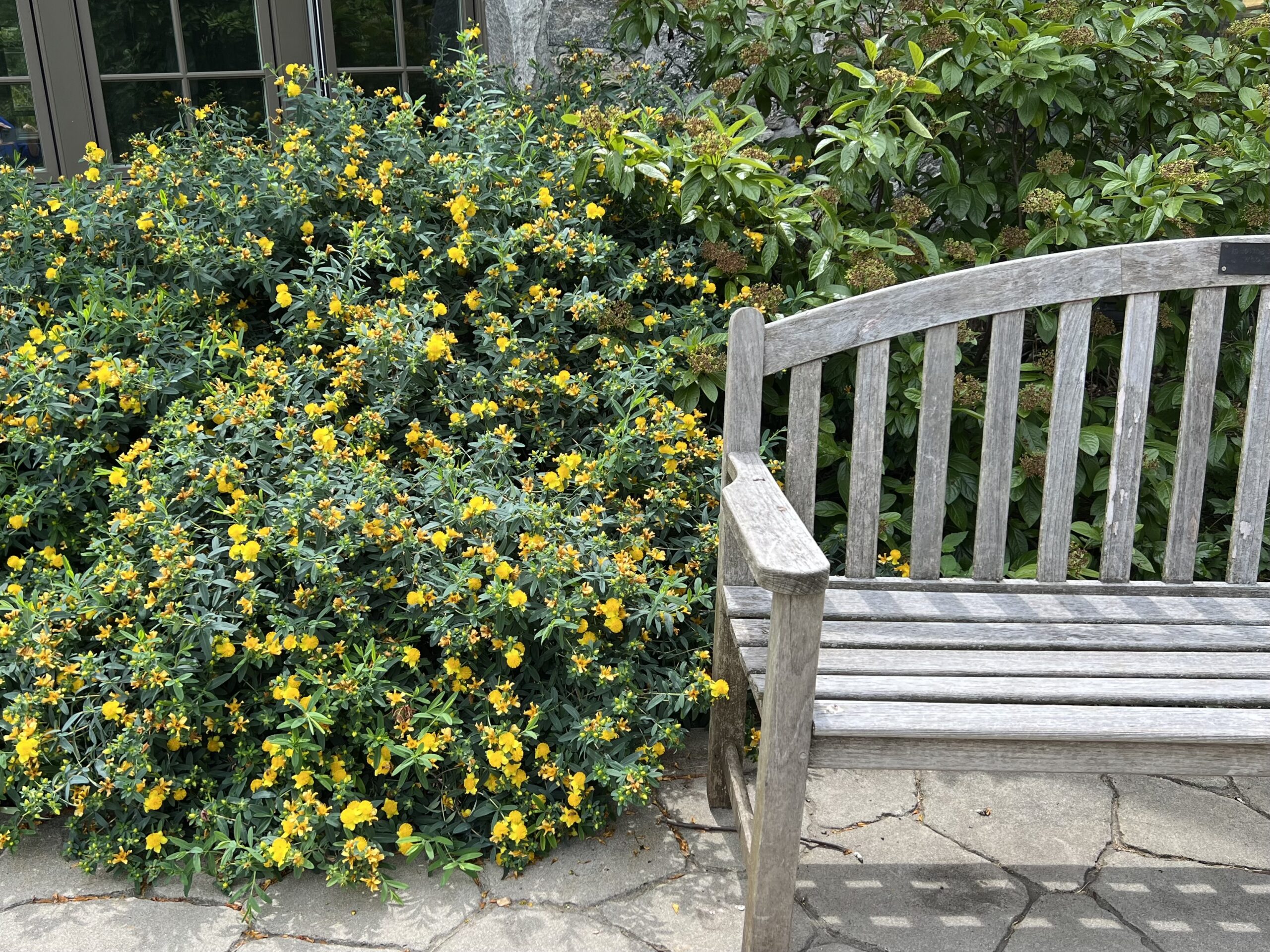
The “humming” plant we love is Hypericum prolificum, or Shrubby St. John’s Wort. It is a beautiful shrub, native to the US from New York west to Minnesota and south to Louisiana and Georgia. It does indeed start blooming at the end of June, and continues to dazzle for weeks into the summer. The scientific name “prolificum” refers to the enormous number of flowers the shrub produces. The shrub itself forms a rounded mound 3 to 4 feet tall and wide with small blue-green leaves.
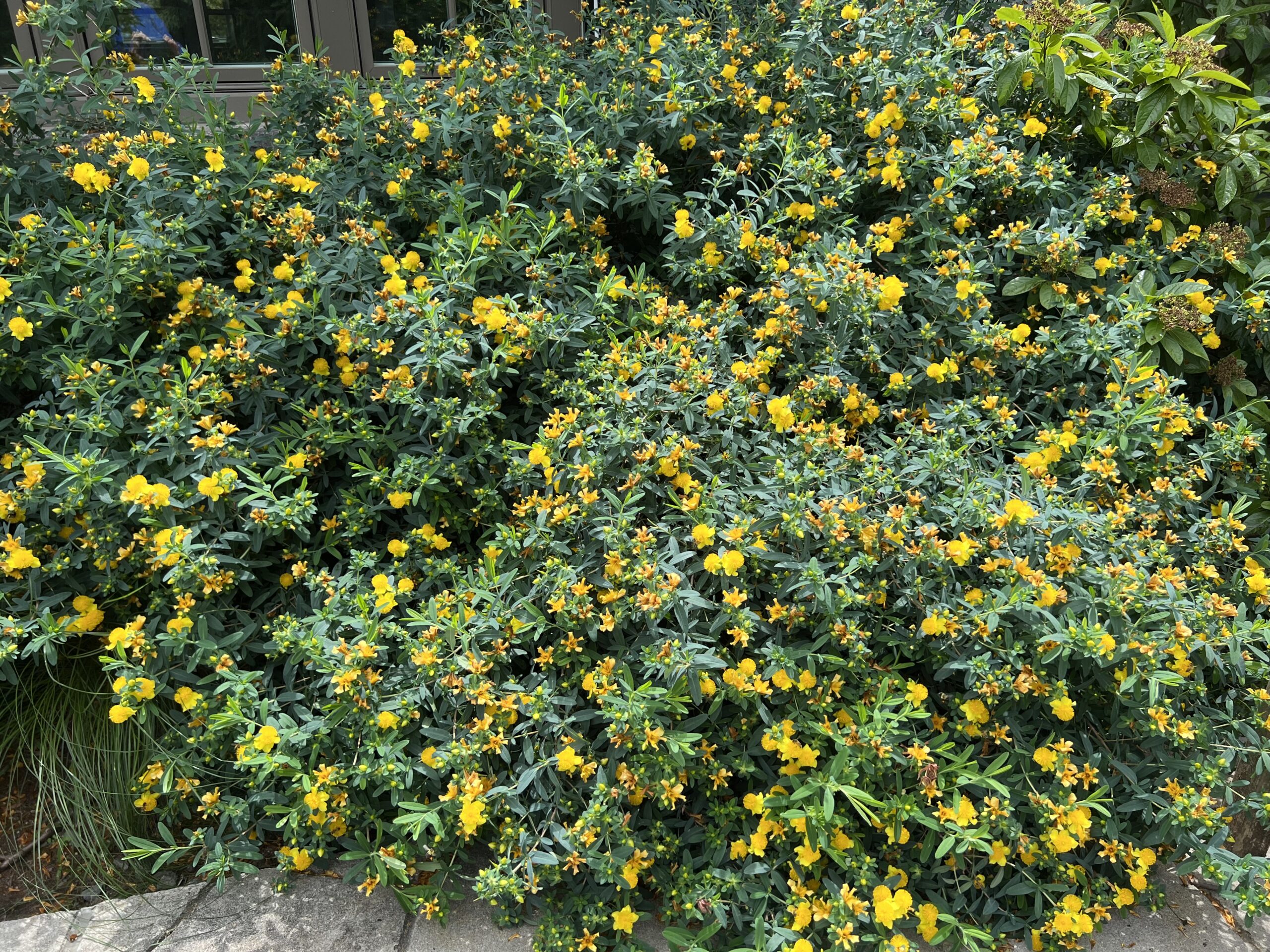
If you go shopping for Shrubby St. John’s Wort, you will likely see Hypericum frondosum, a very similar shrub with a cultivar called “Sunburst” that has slightly larger flowers. Its original native range is further south, in Tennessee and Kentucky, but it does perfectly well in southern New York gardens and throughout Zones 5 to 8. Another species, Hypericum kalmianum, is native to the Great Lakes region and hardy to Zone 4. While botanists can tell these three shrubs apart, most gardeners consider them virtually interchangeable. And all of them have year-round value as landscape plants.
Shrubby St. John’s Wort is essentially carefree, and makes an attractive foundation plant or hedge in full sun. It doesn’t need pruning, but you can shape it to suit your site. The leaves produce a substance that is mildly toxic to deer, so deer avoid it. In autumn, the shrub holds onto its leaves until late in the season, and it has great fall color. And in winter, interesting seed capsules remain on branches that have attractive grey-brown bark.
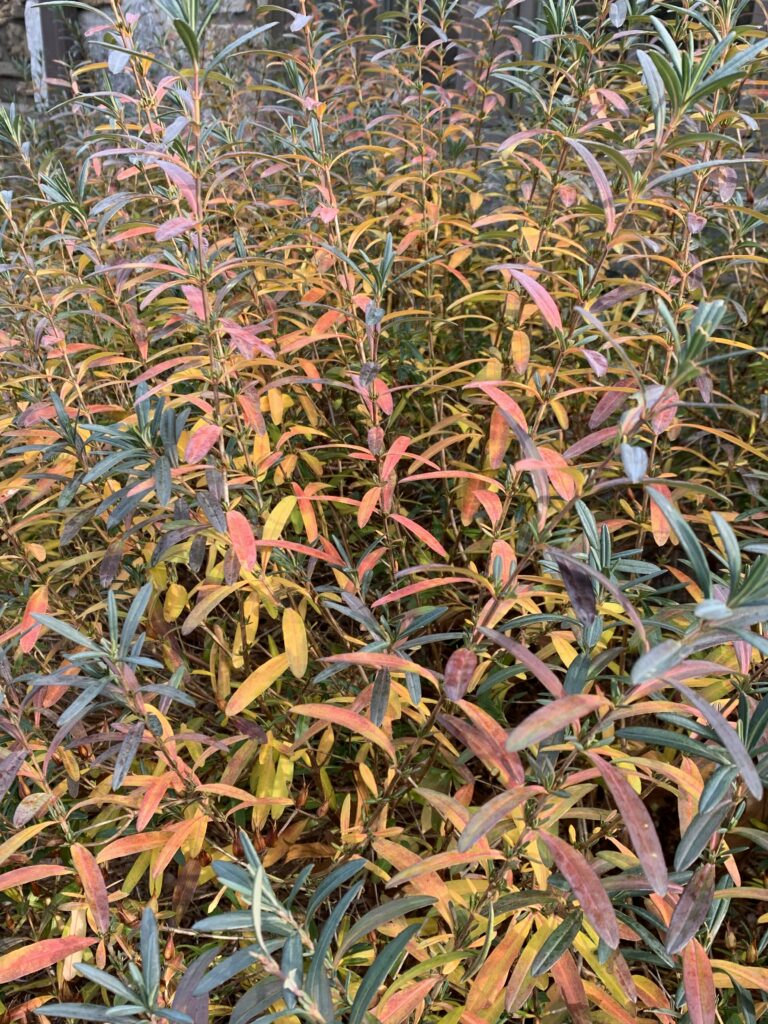
There is no nectar in the flowers of St. John’s Wort, so it’s not a stopping place for butterflies. However, caterpillars of several moth and butterfly species, including the lovely gray hairstreak butterfly, do use the leaves as a host plant. Pollen is the big attraction. The flowers have a huge number of stamens, all loaded with pollen, so bees of every size and description come to the party.
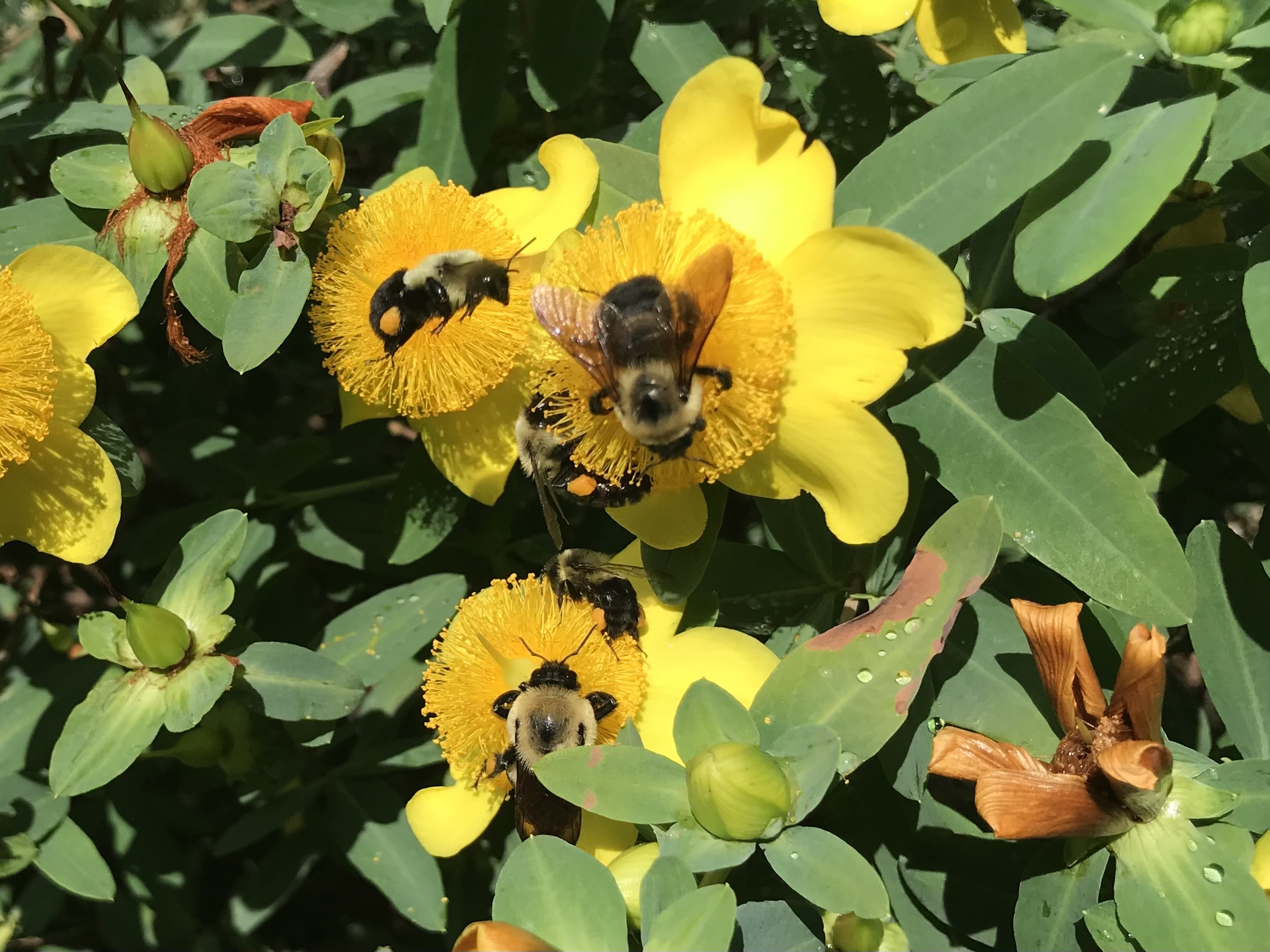
We never get tired of watching the action, and we can observe up close because the bees won’t spare a second even to notice nearby humans. They are fixated on pollen collection, as you can see in this slow-motion video:
And what about that summer buzzin’? Turn your sound up and, technology permitting, you may hear the sound of a plant humming!

